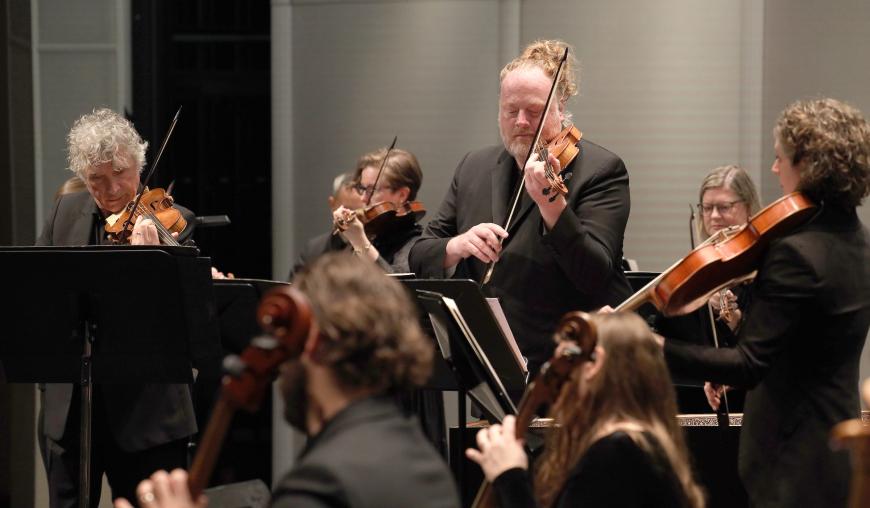
Any two consecutive evenings at the Carmel Bach Festival (CBF) can only hint at the variety of music available here. The programs offered on the evenings of Sunday, July 14 and Monday, July 15 made a good start.
Sunday’s concert at Carmel’s Sunset Center Theater, led by CBF Artistic Director Grete Pedersen, featured Beethoven’s Ninth Symphony. This monumental work known for the choral “Ode to Joy” was preceded by two very brief but entirely different works, Anton Bruckner’s ethereal motet Locus iste and John Cage’s notorious “silent music,” 4’33”.
This sequence of works is what made the concert so distinctive. The three pieces flowed together without pauses separating them, exploiting the sense in which Cage’s composition is nothing but a pause. Even the Festival Orchestra, present for but not playing in the unaccompanied choral Bruckner, didn’t get a chance to tune up until the more conventional break before the second movement of Beethoven’s symphony.
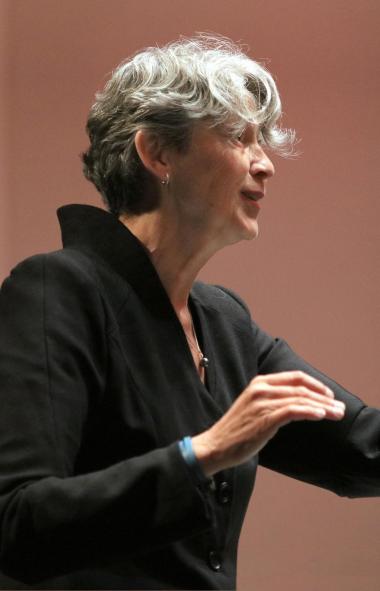
Bruckner’s motet is an exquisite three-minute nugget of the same sober majesty that suffuses his epic symphonies. Perhaps his most sheerly beautiful composition, it features lyrics commemorating the dedication of a church. “Locus iste” means “this place,” and on Sunday, the words encouraged paying attention to the space around us. The Festival Chorale reinforced this awareness by performing the music in a single-file line, which ran along one aisle of the auditorium, around the rear of the orchestra onstage, and out along the other aisle. Seated on an aisle between a soprano and a tenor, I could hear the internal shape — the bones — of the music.
The singers stayed in place for the Cage so that this piece, which the composer specified may be played by any instrument or combination, was silently performed by full orchestra and chorus, though the musicians did not turn pages as Cage requests. What the composer asks the listeners to do is to concentrate on the ambient sounds around them. This can be weirdly compelling. The sudden cessation of the hum of an air conditioner, the sforzando exclamations of a few coughs, and the subterranean mumble of occasional quiet talking — with a hushing “shh,” which was pretty amusing in the circumstances — stood out audibly in this performance, making Cage’s point: Music is whatever sounds we put an artistic frame around and call “music.”
The Festival Chorale then filed out during the opening of Beethoven’s first movement. The group reappeared, joined by the volunteer Festival Chorus, not between movements (as is usual) but during the initial orchestral presentation of the “Ode to Joy” theme. Then, suddenly, Dashon Burton — with surely one of the deepest and most powerful bass-baritone voices ever heard in this work — began his solo recitative from the back of the auditorium, walking slowly down the aisle. As he finished, he disappeared through a side door at the front of the stage, quickly reappearing through another door further back to join his fellow soloists — the equally strong and clear-voiced tenor Andrew Staples, mezzo-soprano Abigail Nims, and soprano Clara Rottsolk — just in time for their first quartet passage.
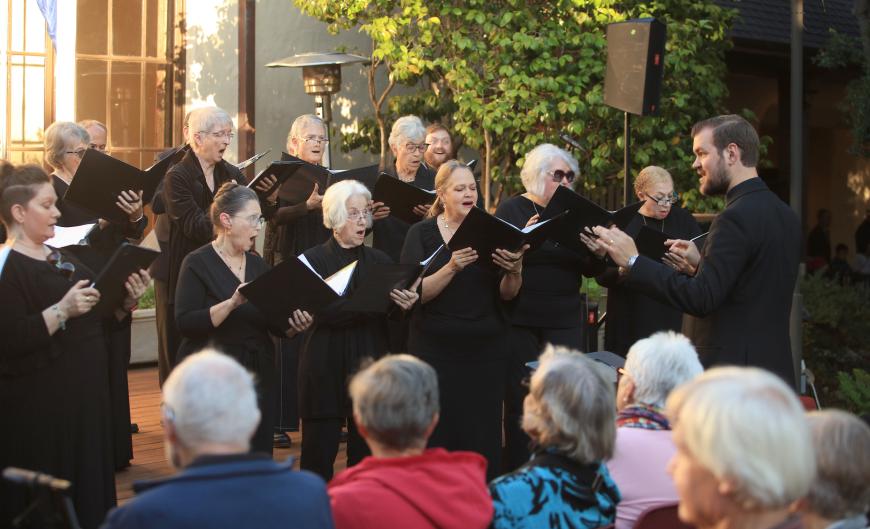
All these daringly timed entrances and exits contributed to a flavor of startling inventiveness. So did the playing of the orchestra. Instrumentally, this was a historically informed rendition: natural horns, clarion brass, nasal woodwinds, and strings with a minimum of vibrato, giving a light, punchy sound to the whole work. But Pedersen’s interpretation had the heft of a modern performance, juxtaposing poignancy and power, giving profound lyricism to the Adagio molto e cantabile, and putting full force behind the aptly dubbed “terror fanfare” at the opening of the finale.
Monday evening’s concert in the same hall was for a small string orchestra (with a little continuo and other subtle additions), led from the violin by Peter Hanson, who also serves as concertmaster of the full Festival Orchestra. Again, there was daring programming: Max Richter’s “recomposed” version of Antonio Vivaldi’s The Four Seasons paired with some unaltered Vivaldi, the Concerto for Two Violins and Two Cellos, RV 575. Hanson’s fellow soloists were violinist Edwin Huizinga and cellists Paul Dwyer and Sarah Stone.
Vivaldi avoids congestion in this work by having his soloists play mostly as pairs. The thin and warbly sound of the ensemble worked well with Vivaldi’s light and chipper composition.
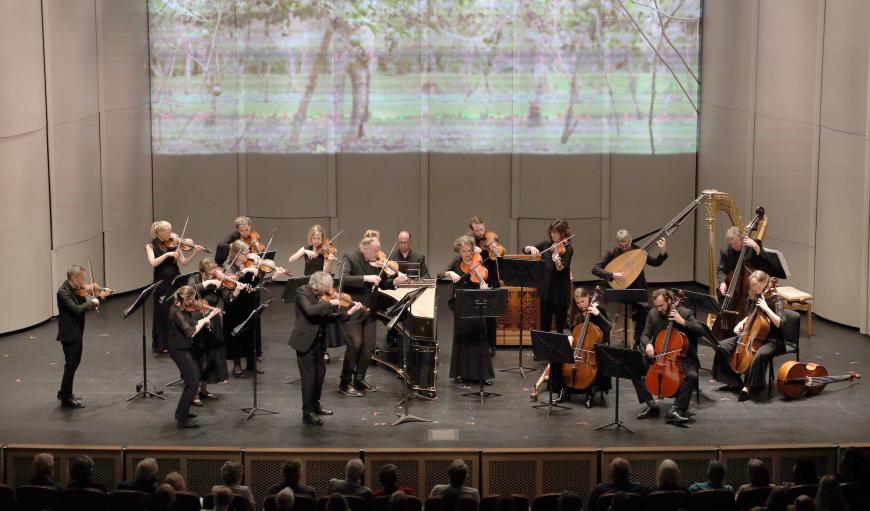
An extraordinarily creative string arrangement of a plainchant by Hildegard of Bingen, O frondens virga, was even better served, as was a suite of movements from Jean-Philippe Rameau’s opera-ballets, “Les sauvages” and “Tendre amour” from Les Indes galantes and “Entrée de Polymnie” from Les Boréades. These pieces had an impressively rich sound for a small orchestra.
Unfortunately, J.S. Bach’s Brandenburg Concerto No. 6, with Karina Schmitz and Kyle Miller as the doggedly busy viola soloists, was not so effective. The dark tone of the ensemble, with no violins, was not entirely responsible. It was as if Bach had gotten trapped in his own intricacy and the fun shown in Vivaldi’s concerto couldn’t come out.
Nor did Richter’s composition, though lively and energetic, work ideally. This piece requires a stronger and heavier sound than these performers were prepared to give. The music sounded even more fragmented than Richter intended, and Hanson’s solos tended to disappear into the ensemble. Still, it was a worthwhile evening full of enjoyable listening.
And there is much more to the Carmel Bach Festival than just evening concerts. I was busily occupied at three other venues scattered around Carmel during the day on Monday.
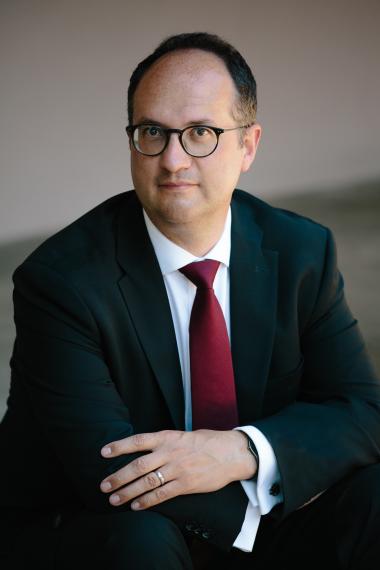
Andrew Arthur gave a recital of organ music by the ultra-Lutheran J.S. Bach in the incongruently sumptuous and ornately Catholic Carmel Mission Basilica. As another attendee remarked, you have to go where the organ is. Arthur sat semi-hidden at a console in the middle of the church, forcing the audience’s attention on the music and the surroundings. His performance showed Bach to his best advantage. The highlight was the Chorale-Partita, BWV 768, for the inventiveness of Bach’s variations and the imaginative succession of tone colors that Arthur unleashed.
Andrew Megill, director of the Festival Chorale, conducted a master class at Carmel Presbyterian Church with CBF’s Virginia Best Adams Fellows (who had also sung in the Beethoven). The fellows are four young singers of already impressive accomplishments who gave vivid performances of a Handel aria, an obscure motet by Marc-Antoine Charpentier, and recitatives by Bach. Megill’s comments encouraged the singers to show the meaning of the words through phrasing and breath control and to be aware of the musical expression conveyed through harmony.
The sanctuary of All Saints’ Episcopal Church was host to an exotic chamber music concert of the variety possible when an entire orchestra can provide the performers. The largest item was Saloon Music by Bruce Broughton, rousingly reminiscent of Western movies like Silverado and Tombstone that Broughton is known for scoring. The piece features a vaudeville pit band of violin, cello, double bass, clarinet, bassoon, cornet, trombone, piano, and percussion. Other works were scored for different combinations of these players, from Jabra Latham’s meditative Solo for Clarinet, played by Ginger Kroft while hidden from the audience at the back of the church, to the lively showmanship of Cousins by Herbert L. Clarke, featuring the cornet of Leonard Ott.
These smaller gems, plus the pleasant surroundings of the town, made it worth staying over in Carmel between the two evening concerts. And there’s plenty more to choose from as the festival continues through July 27.


